Classification of Living Things: Taxonomy
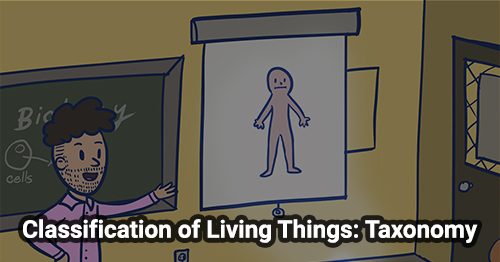
This lesson is meant for grades 11+.
Now that you know more about what makes something alive, the next question that biology tries to answer is: how do we study all these different organisms?
One way to study living things is to classify them into different categories. Think about the many different organisms that exist in the world. What makes a bird a bird? What makes humans different from apes? What is the difference between a slug and a snail? In fact, how do you tell the difference between one living thing and another living thing?
Or, think about it this way: You and your friend are different living things. You and a bird are also different living things. But you and your friend are a lot more similar, than you and a bird.
How do you explain the magnitude of these differences? There are more differences between a bird and a human being than two human beings. This is where taxonomy is used. Taxonomy is the process of organizing living things into groups that have common characteristics.
Taxonomy
Imagine all the species that exist in the world. How would you organize them so that you can better understand them all? For example, you could list all the species in alphabetical order. That wouldn’t tell you very much about how each species is related though. You could also list each species by colour, or size, or even smell! That probably won’t help you either - a killer whale and an elephant are about the same size, but are very different from each other.
Biologists use taxonomy as the method of classification. The idea of taxonomy is based on how species evolved from each other, or the evolutionary history of a species. It is like a family tree, but of all the living things! Instead of having your great great grandparents at the trunk of the tree, the tree would show our universal ancestors as a species. So for example, since birds are said to have evolved from dinosaurs, the bird branch would be coming out of the dinosaur branch in this chart.
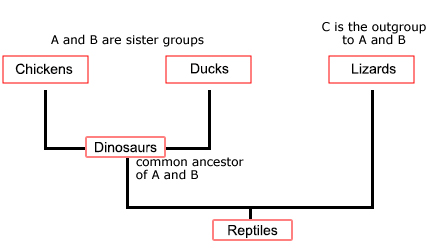
By organizing species in this way, we are able to quickly see how different species are related to each other! As a result, species are organized into many groups that have fewer & fewer common characteristics as you follow the tree.
However, the taxonomy is an imperfect model of the evolutionary history of the animal, and can continue to change as we learn more. This is because there are many characteristics that biologists use to organize species into a taxonomy tree (also known as a phylogeny). Here are some criteria that we use:
- physical appearance
- method of movement
- how they reproduce
- habitat
- what and how they eat
- hereditary information
- internal structures
- etc.
For example, Cats and Bears have broad characteristics in common (both use sexual reproduction, circulate blood, etc.). Thus we can group them together as ‘Animals.’
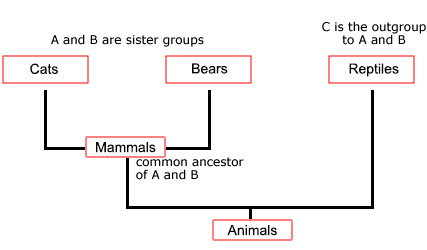
Biologists use a dichotomous key to help them create phylogenic trees. A dichotomous key is a series of ‘yes’ and ‘no’ responses that address the presence or absence of a single trait. So any new organism either has or doesn’t have these traits. A key should never describe more than one possibility (e.g., 2 legs or 4 legs: but what if you run into something that has 6 legs or no legs?)
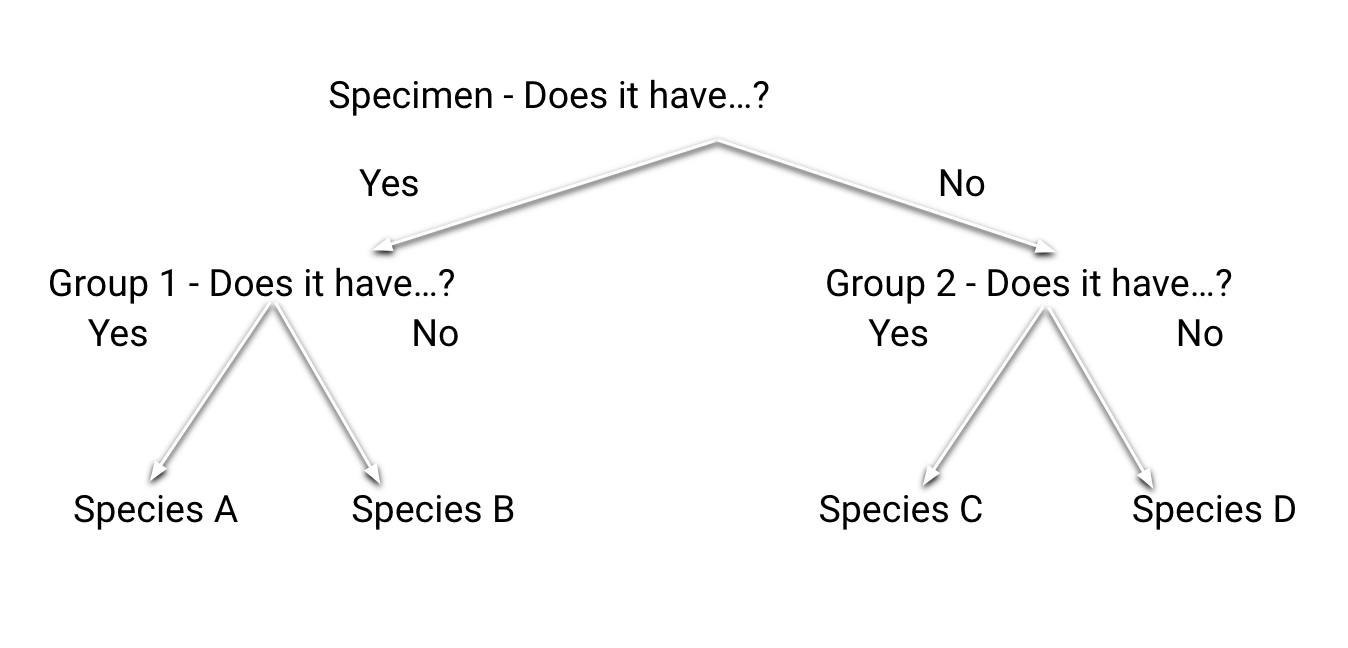
Let’s take a look at a sample dichotomous key for four different animals, the jellyfish, the sea star, the tiger, and the snake.

What happens when we discover a new organism?
When scientists discover a new organism, they compare the new organism to known organisms so they can be classified, but this can sometimes be difficult. This is because new organisms might share some characteristics with known organisms, but have major differences that make them very different.

A single taxonomic group is called a taxon. A number of taxonomic groups are called taxa which is the plural of taxon.
(Part 2) Classification of Living Things (Part 2): Taxonomic Hierarchy
Let’s learn more about the taxonomy that biologists use. Within the taxonomy, biologists use a classification system that groups different organisms together within different levels. The broadest level contains the most organisms, and the narrowest level contains the least - kind of like a pyramid!
Let’s learn more about the taxonomy that biologists use. Within the taxonomy, biologists use a classification system that groups different organisms together within different levels. The broadest level contains the most organisms, and the narrowest level contains the least - kind of like a pyramid!
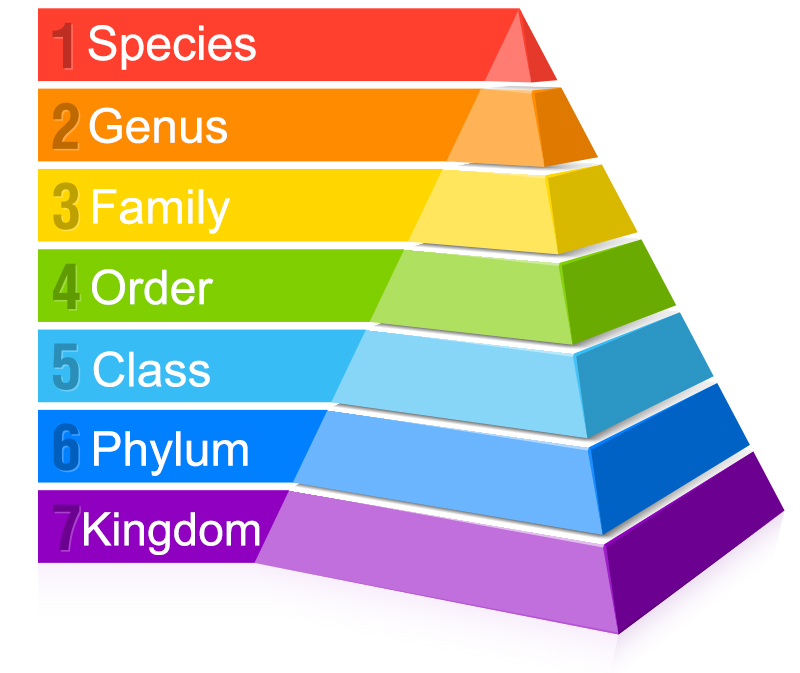
The classification system used by biologists changes and evolves often. This is because our understanding of living organisms change, and the taxonomy may no longer work as well as before. In fact, biologists are constantly working to better the system, proposing modifications to this system. There are debates on what taxonomy to use, and there many groupings that are informal that are only used to help out scientists. For our purposes, we will look at one example that is currently commonly accepted, with the six kingdoms and seven levels.
Kingdom: We will be looking at six kingdoms: Archaebacteria, Eubacteria, Plantae, Fungi, Protista and Animalia.
Phylum (plural phyla): This is still a very broad classification but it splits kingdoms into multiple groups and is more specific than kingdom. There are approximately 35 phyla in kingdom Animalia. For Example – Porifera, Cnidaria, Chordata, Arthropoda, Annelida, etc.
Class: A class is the next level down from Phylum. Kingdom Animalia includes approximately 108 classes including class mammalia, reptilia, aves, etc. Examples of Arthropod classes include insects and arachnids (spiders, mites, and scorpions).
Order: Order is a more specific rank than class. There are around 26 orders in class mammalia such as primates, carnivora, etc.
Family: This category of taxonomic hierarchy includes various genera (plural of genus) that share a common attribute or a few similarities. For example there are nine or ten genera in the walnut family.
Genus: A group of similar species with common attributes forms a genus. It includes a group(s) of species that are structurally similar or phylogenetically related.
Species: A species (or taxa) is a group of organisms that can breed successfully with each other to produce viable & fertile offspring. We do not have an accurate count of the number of species currently on Earth. In fact, estimates can vary widely. Some estimates say that there are about 8.7 million species. Others say 30 to 100 million. Some recent studies have even put the number at about 1 trillion! To date, we have only described or identified approximately 1.75 million species on Earth. Species is the most specific level in the hierarchy.
Let’s look at how this works in real life. Here’s what a slime mould can be classified as using the seven levels of classification outlined above:
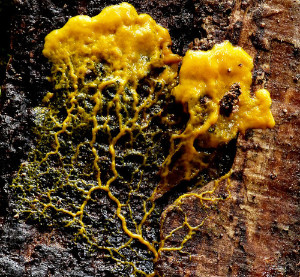
Slime Mould
Kingdom: Protista
Phylum: Myxomycota
Class: Acrasiomycetes
Order: Dictyosteliales
Family: Dictyosteliaceae
Genus: Dictyostelium
Species: discuideum
And here’s how humans are classified:

Humans
Kingdom: Animalia
Phylum: Chordata
Class: Mammalia
Order: Primates
Family: Hominidae
Genus: Homo
Species: sapiens
Organisms are given scientific names based on their Genus and species taxon classification. For example, humans are called Homo sapiens. We belong to the genus, Homo, which is always capitalized, and the species, sapiens, which is always lower-cased and italicized. This way all scientists have an agreed upon name to call each living organism no matter what country you are from or the language you speak.
Like the organisms themselves, this classification system is constantly evolving and changing. Some biologists use additional categories such as Superkingdoms or Domains: Eukaryota, Archaea (Archaebacteria), Bacteria (Eubacteria). Even the six kingdoms are being rearranged and renamed. There are talks of changing the name of the Animal kingdom to the Metazoa kingdom. Sometimes, scientists may also use additional informal groups to help them classify organisms!
So…the COMPLETE classification of a human could be as long as:
SuperKingdom Eukaryota
Kingdom Metazoa (Animalia)
Phylum Chordata
SubPhylum Craniata
SuperClass Gnathostomata
Class Mammalia
Order Primates
SubOrder Catarrhini
Family Hominidae
Genus Homo
Species sapiens
Subspecies sapiens
However, this isn’t 100% accepted and there are other groups of biologists proposing modifications to this system. So we’ll stick to the Six Kingdoms and Seven Levels system we have for now.
How to remember the classification levels:
To recap, these are the seven different classification levels:
- Kingdom
- Phylum
- Class
- Order
- Family
- Genus
- Species
You may have a hard time remembering all seven classification levels. Try using a mnemonic (pattern of letters) to help you out!
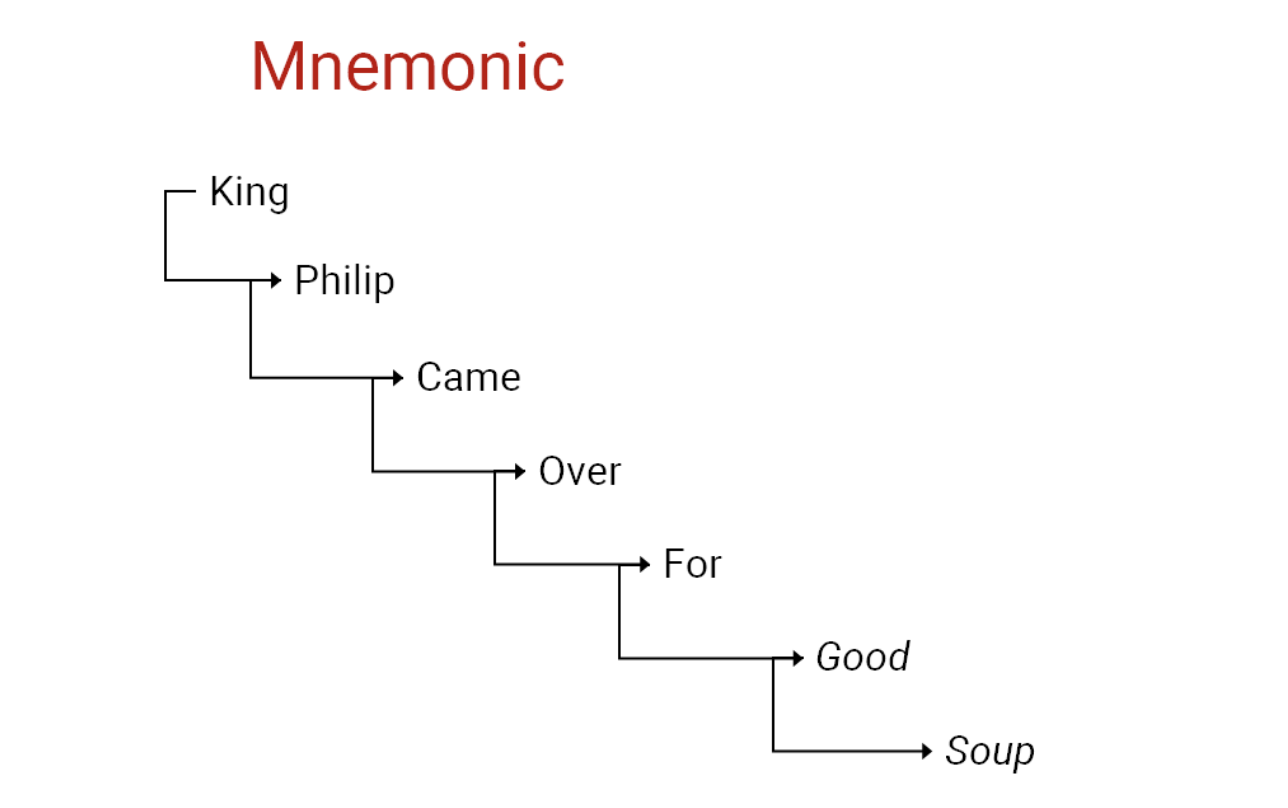
King Philip Came Over For Good Soup
Has the same first letters as
- Kingdom
- Phylum
- Class
- Order
- Family
- Genus
- Species
So it can help you remember the order!
All lessons & quizzes are free!
This was just one of the lessons in our Immune System and Vaccines section. There are over 60 lessons on Kids Boost Immunity just like this one on a variety of subjects. Each lesson includes a quiz, and every time a student scores 80% or higher on a quiz, we will donate life-saving vaccines to UNICEF Canada. Sign up now!



